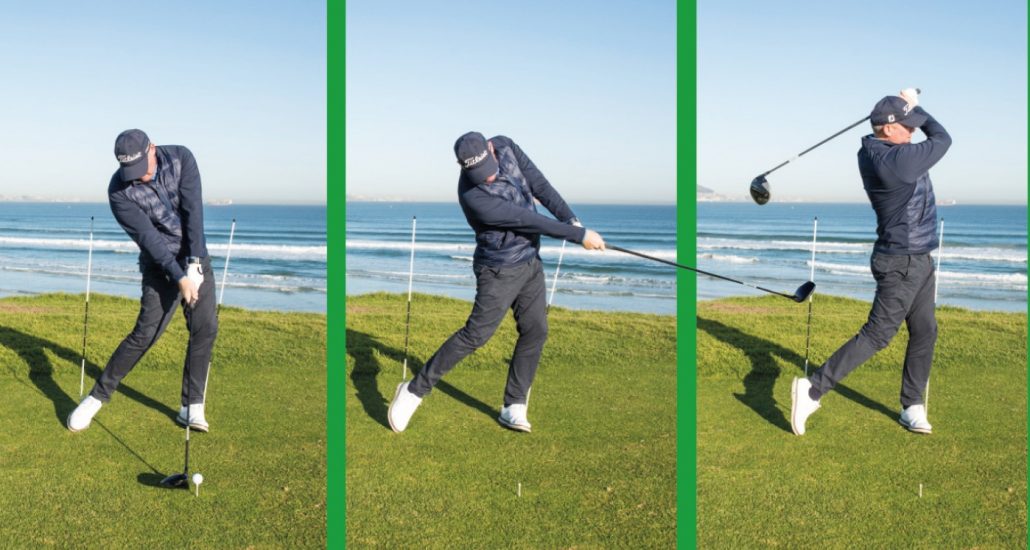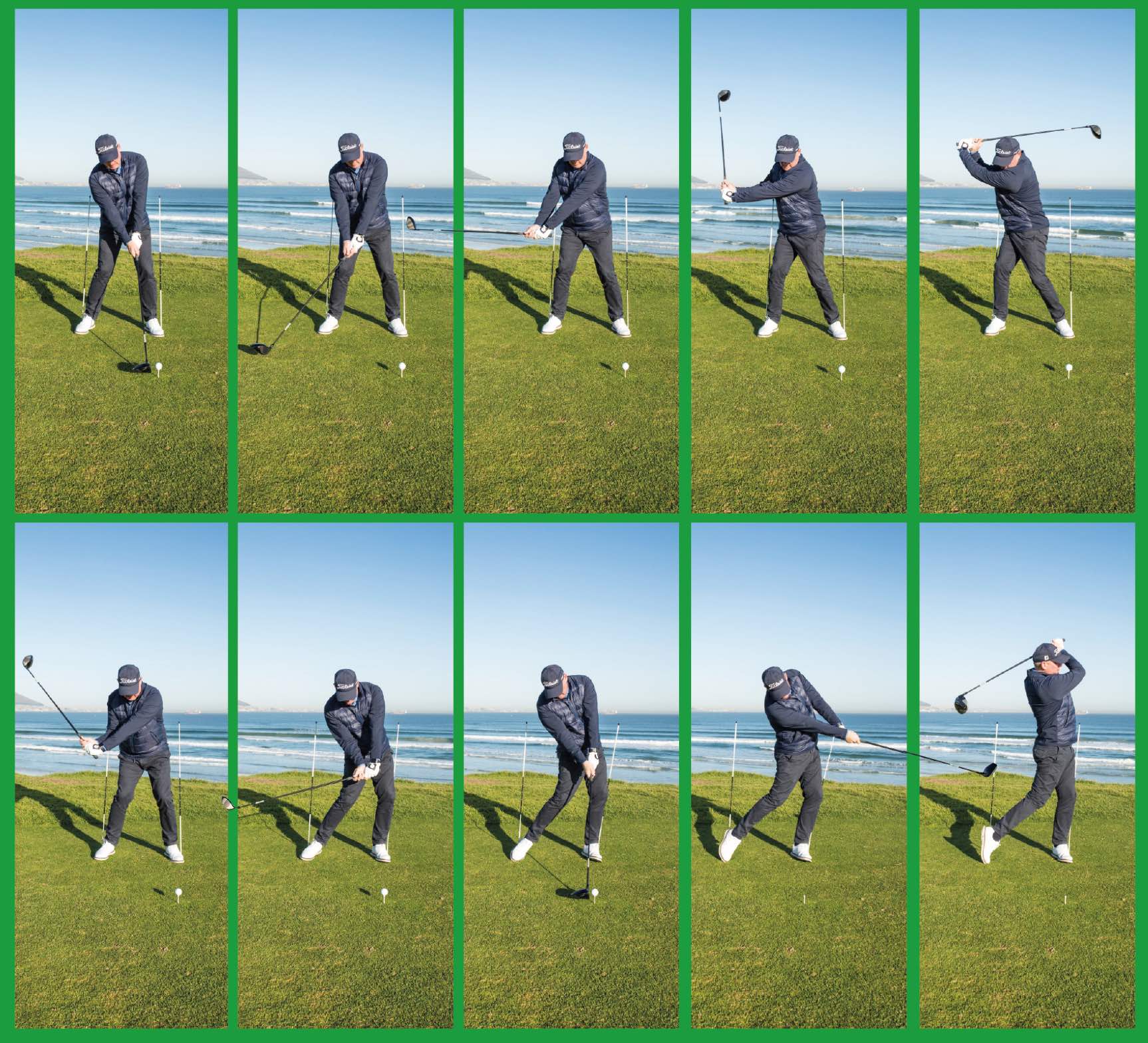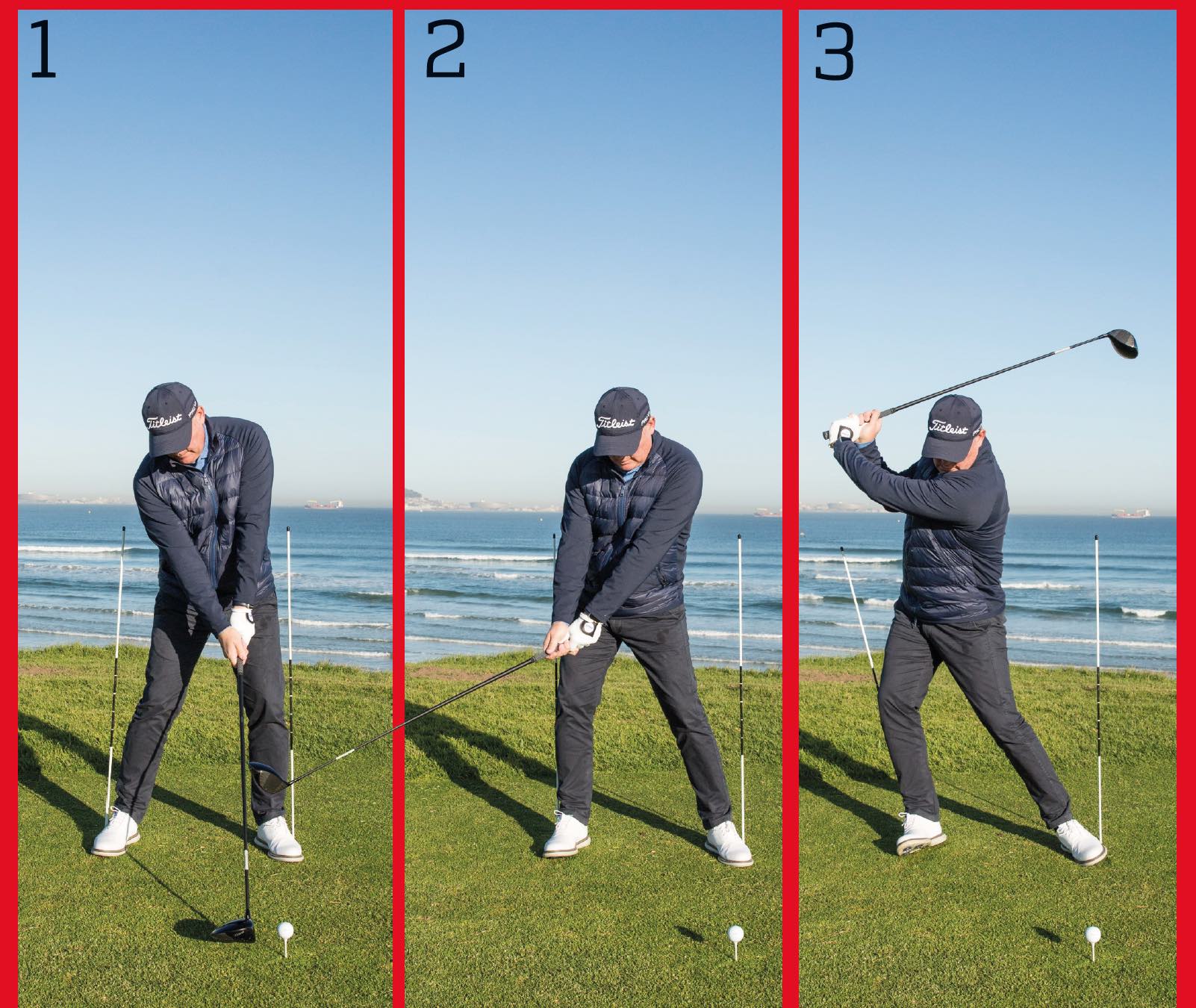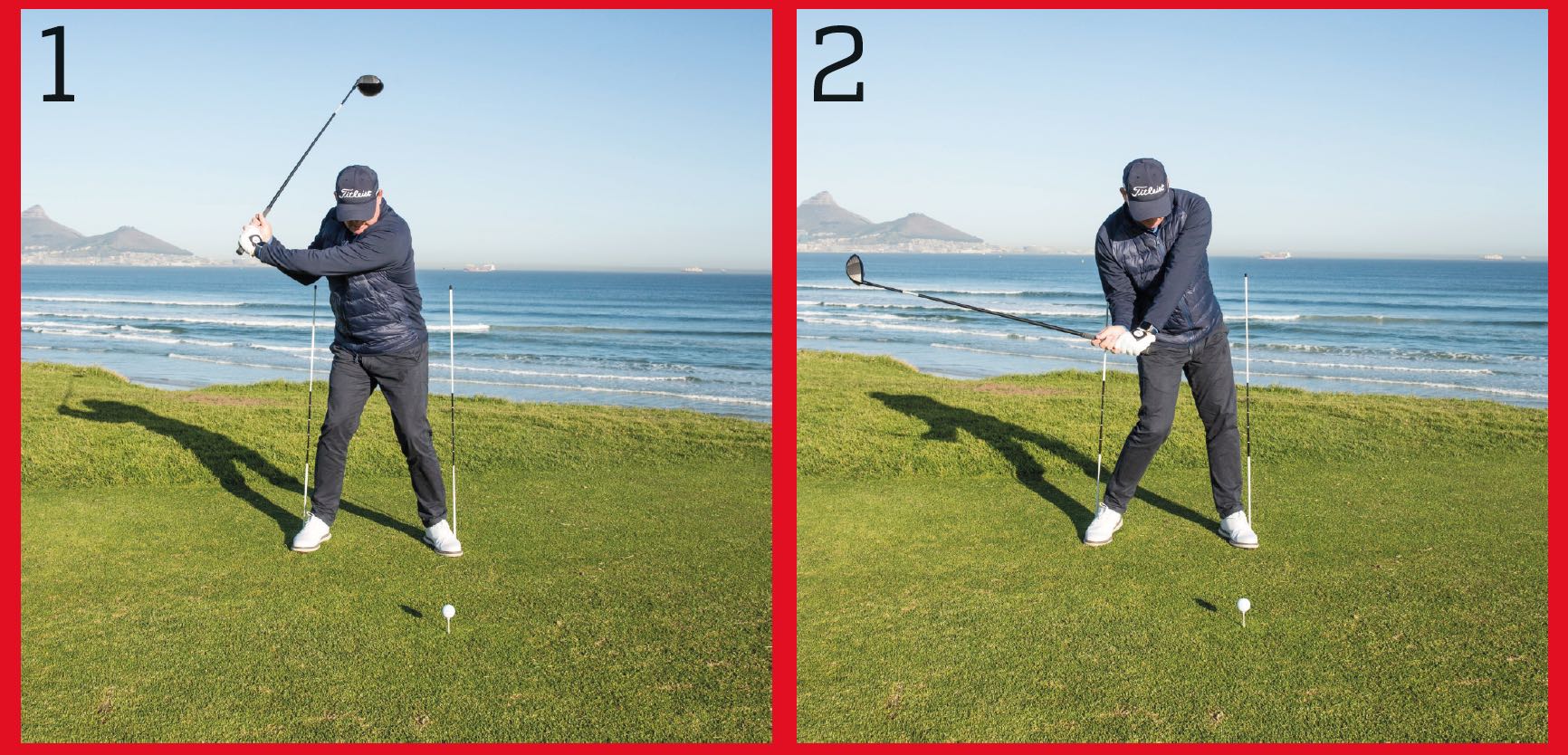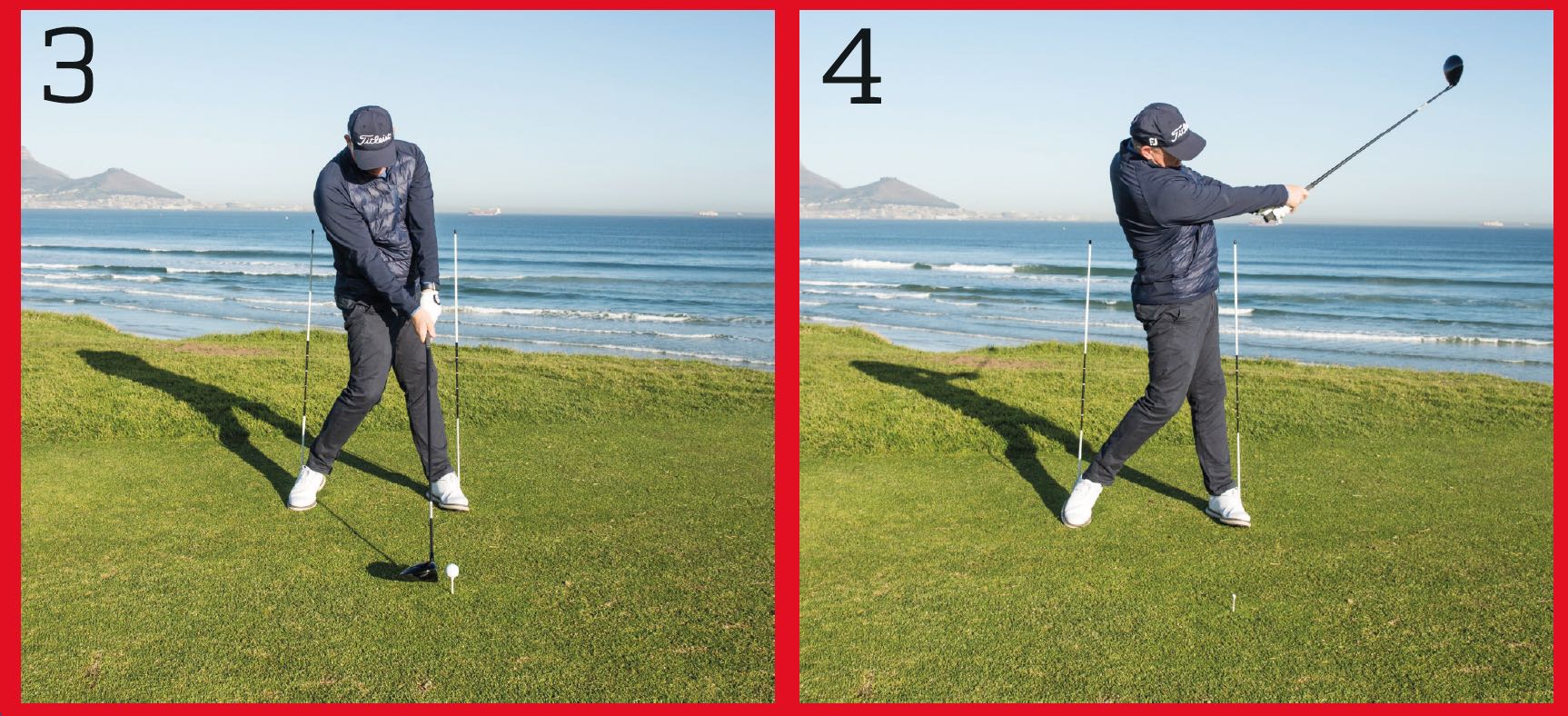GRANT HEPBURN highlights some of the most effective golfing drills ever devised. He explains why they have stood the test of time and how they can help you take your game to the next level.
Better golfers tend to get the most out of their swings by rotating their hips and shoulders in the backswing to coil up power at the top of their swings. They can then unleash this power as they unwind their hips and shoulders on the downswing. It goes some way to explain why some physically smaller golfers are still able to hit the ball prodigious distances.
In this latest drill, you need to find two alignment sticks or old shafts and place them into the ground, as I have done. They need to be positioned vertically and touch your heels, running up past your hips.
Now you are going to make a normal golf swing, taking note of when you touch either of the sticks. This drill is really effective, as it gives you instant feedback on what you are doing wrong – or right.
Getting it right
In the correct sequence, I have set up in a powerful position. My weight slightly favours my right side, with my left shoulder above the right and my left hip above the right. My knees are slightly flexed.
Note how, on my backswing, I sweep the club away and my right hip turns inside the alignment stick. My hip might move slightly towards the stick as I transfer my weight to the right side, but I don’t bump the stick with my right side.
This action helps me to turn like a corkscrew, allowing my shoulders to reach their full turning potential as I reach the top of my backswing in a powerful, loaded position.
As my downswing starts, my weight transfers to my left side and my hips start to unwind, clearing a path for my hands to swing through. On the way down, you need to have lateral movement as you move your weight to the left side, so you need to bump the stick.
Ideally I will bump the stick first with my knee and then my hip as I transfer my weight and unleash the stored-up power into the back of the ball.
Getting it wrong: Sliding hips
In this sequence, I highlight a common problem experienced by ammies. My hips have not turned in my backswing; instead they have slid laterally to the right and bumped into the stick.
When my hips slide to the right, my body cannot turn behind the ball, so I end up stuck in a position where my right hip ends up being in the way of my turn. This leads to, among other things, the reverse pivot. Plus, I have no coiled-up power and my head and my weight have not been able to move into the right side.
From here, I would expect a steep, weak downswing that causes the club to swipe across the ball, leading to a loss of power as well as accuracy.
Getting it wrong: Spinning out
Another common problem I see in amateur golfers is that, having turned their hips correctly in the backswing, they fail to unwind them in the correct sequence in the downswing.
What should happen is that I first need to shift my weight, with my legs, to the left side before my hips unwind.
However, in this sequence, you can see how I have spun out early, meaning that I don’t have enough lateral weight transfer to my left side. Instead, note how I have opened my body early, almost from the top of my backswing.
With my weight stuck on my right side, I don’t bump the shaft on the left and this generally results in an over-the-top swing and an out-to-in swing path.
– Hepburn has been a regular face in Compleat Golfer for more than a decade. His CV includes time coaching on the European and PGA Tours, and an impressive list of top amateurs and pros. He is the CEO of Golf RSA and the South African Golf Development Board. Follow him on Twitter @granthepburn.
– This article first appeared in the September 2022 issue of Compleat Golfer magazine. Subscribe here!


